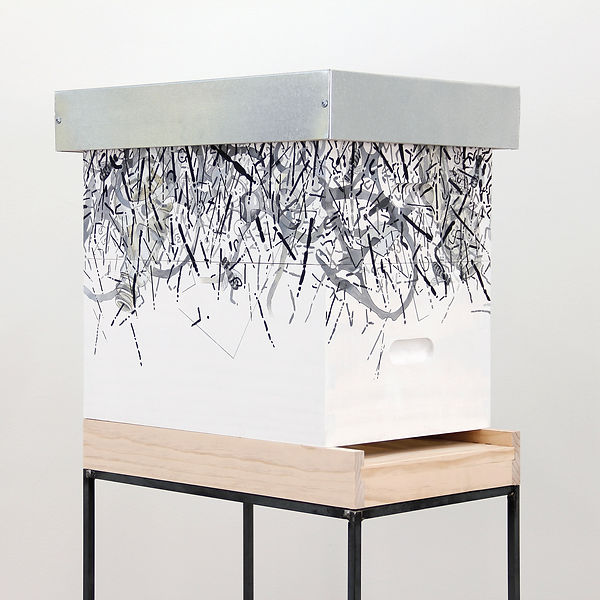A collaborative exhibit, “Joseph Zito – Plus Ten.”
Lennon & Weinberg, NYC
The work in this exhibit is based on the original Reverend Lorenzo Lorraine Langstroth's beehive construction of 1851. Joseph Zito became interested in beehives and approached both the standard form of the hives and their colonies of bees as the starting points for a new series of sculptures and watercolors. In contrast to his usual solitary studio practice, and an acknowledgment of the essentially social nature of bees, he invited ten artists to collaborate with him on this project. He made a clear-pine beehive for each artist and asked them to paint or otherwise embellish the exterior in whatever way they chose.
My contribution "Colorless & Odorless" for this exhibit regarding honey bees focuses on Carbon Dioxide's (CO2's) role in the worldwide "Colony Collapse Disorder" plaguing bee populations. My studies for the work led me to a research paper published by the Yale School of Forestry & Environmental Studies 2016, "How Rising CO2 Levels May Contribute to Die-Off of Bees," by Lisa Palmer. Ms. Palmer's research found that rising levels of CO2 in the atmosphere caused a dramatic reduction in protein in pollen over decades of burning fossil fuels. The lack of protein in this vital food source for honey bees has reduced their reproduction ability. This is, of course, a significant factor in colony collapse. Bees are responsible for creating approximately 60% of our food sources.

One of the initial drawings for the painting “Colorless & Odorless”

Drawing onto “bee box”

Painting in progress, Bethel CT Studio

Finished bee box project
